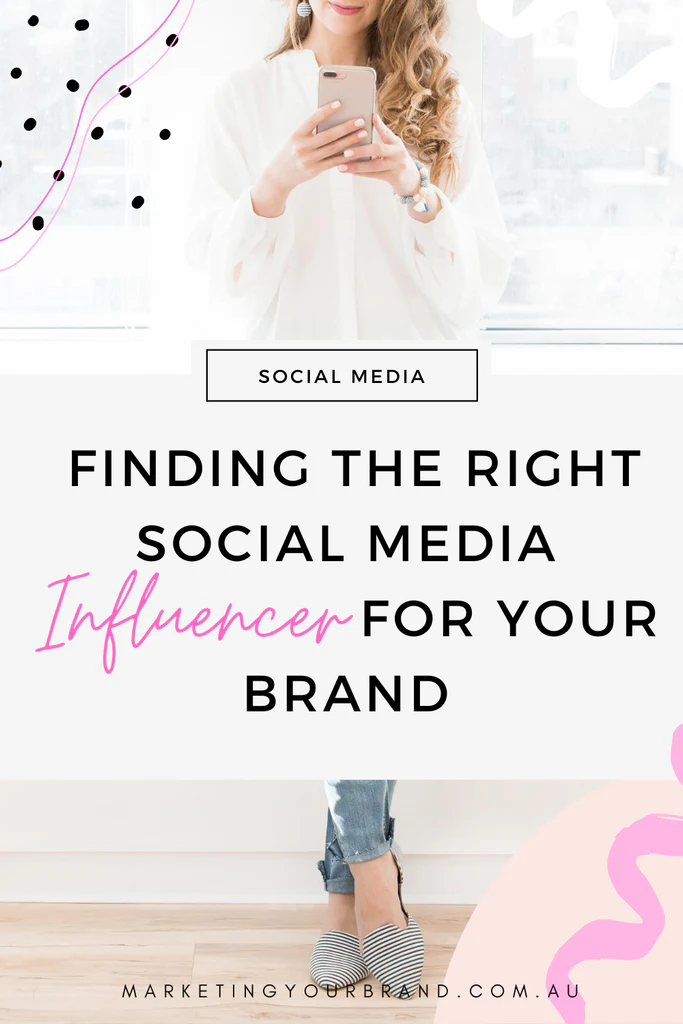Move aside social media marketers. The new way to advertise and promote brands is through social influencers. Although the name is different, the general concept is the same. Social influencers help promote a brand to bring attention to its products for a boost in sales. Influencers have one significant advantage over your average social media marketer — they can sway opinions and turn skeptics into customers. Influencers are social media experts with a twist. If you decide to work with influencers, here is how you choose the right one.
1. What is Their Relevance in Your Market?
Just because someone is a celebrity in their niche doesn’t mean they influence your market. The influencer needs the respect of the audience members if he or she is to sway their opinions. So pick an influencer who can relate to your market, and who is respected within the demographic that makes up your main customer base.
Although your own opinion of the influencer is what determines that person’s relevance, it also has a lot to do with your clients. You wouldn’t choose a young spokesperson for a product that attracts consumers over the age of 60. An influencer must be relevant to your market and your customers.
2. Can the Influencer Engage Customers?
The biggest mistake you can make is to judge engagement by the number of followers the influencers has on their social media accounts. You can buy followers, and most high-volume influencers artificially boost those numbers to trick potential followers.
Engagement should manifest as a natural rise. If an influencer has 100 followers one day, and then a month later has 500,000 followers, then you can take it as a good sign that he or she paid a third party for the increased engagement. This same concept also applies to higher than average, post engagement rates, likes and comments.
3. What Kind of Reach Do They Have?
You shouldn’t base your opinion on the number of followers, but you should evaluate their quality. The fan demographic matters for your brand targeting. If your product is mainly for a US-based market and a majority of followers are from southeast Asia, then the influencer is probably the wrong one for your brand.
4. How Often Does the Influencer Update Social Media?
Social media accounts should frequently be updated, or they lose their importance. They also lose followers as they become dormant. You need an influencer who regularly updates their primary social media accounts; the one that they focus on should be the one you target with your promotions and advertising campaigns.
When you discuss a contract with the influencer, make sure you specify the frequency at which you want promotions added to their social media feeds. Doing so will ensure that consumers see your products at specific intervals during the month.
5. What is the Influencer’s Experience?
The importance of experience goes back to the importance of the influencer’s impact on your target market. If your customers don’t respect your influencer, then their promotional impact on social media will be weak. Evaluate the influencer’s current social media feeds and see how people react to their opinions.
They don’t necessarily need to have experience with your product; they can even use competitor brands. They just need expertise in the general market, so their opinion holds value to readers.
6. What Platform Does the Influencer Use?
Every platform has a particular demographic. For example, Google+ interests many technical professionals, while LinkedIn targets business-minded professionals. Instagram offers a lifestyle focus, where as Pinterest is swayed toward education. You should have already evaluated and prioritised a social media platform in mind when you choose where to place your promotional campaigns.
Choose an influencer who is familiar with the platform that interests you and knows how to use it. That person needs a long-term account that has plenty of reach across your target demographic.

7. Can the Influencer Improve Your Brand Image?
This step is especially important for new brands building an image. First impressions are everything, so you need an influencer who will enhance your brand image rather than turn off customers. Choose an influencer with a tone and style that matches your advertisement personality. You want to display the right first impression to potential clients, especially when you have several competitors.
8. Determine the Audience for Your Advertisements.
You could have several demographics, depending on your brand and products. Each consumer group needs a separate campaign designed with a distinctive style. Therefore, you could use several different influencers based on your ad campaign strategy.
Influencers mainly stick to a target audience, so when you evaluate them, discuss your ad campaigns and their intended market.
9. Discuss Language and Brand Safety
Spokespeople have damaged plenty of brands. The wrong spokesperson can lead to a boycott of your business, so you need to keep all communication G rated and free of controversy. You can add this clause into a contract with the influencer you choose to work with, but you should also read their past social media posts to ensure that they keep their communication clean.
Brand safety is the concept of protecting your brand from boycotts and a poor reputation. You can ruin your brand image from bad publicity that targets your influencer, even if you have nothing to do with their poor public image.
10. Shop Around for Pricing.
Although big-name influencers cost a lot of money, they also give you a better return on investment (ROI). Your advertising budget will drive your influencer choices. Everyone would love to have the mega star represent their brand, but it comes with a price. Even influencers without celebrity status, known as micro-influencers (under 50K of followers) can create an impact, so you don’t always need the big star.
You can pay an influencer in various ways, even using a commission model based on sales. Most influencers prefer to get paid on a monthly basis or per post. Determining your budget for each post, as well as your potential sales revenue from the traffic, will help you negotiate the price of your contract.
Any advertiser will tell you that influencers are important for social media marketing. Taking the time to find the right one can help you achieve brand success sooner, rather than later.








